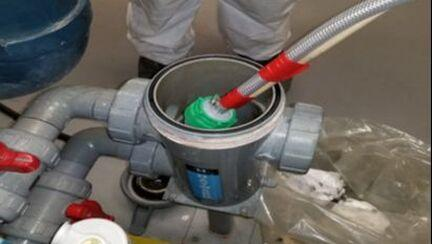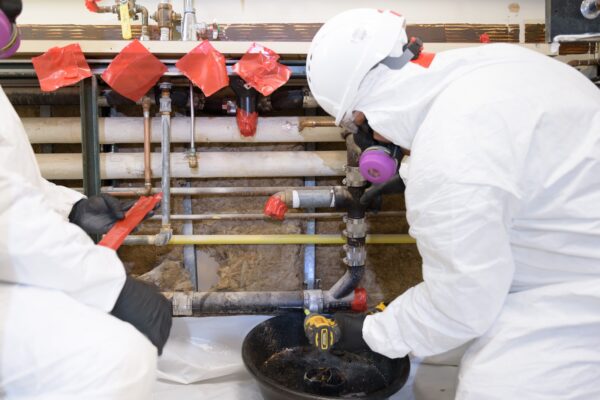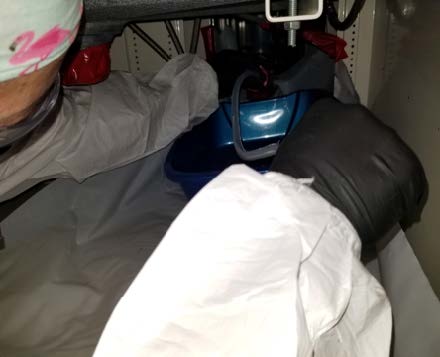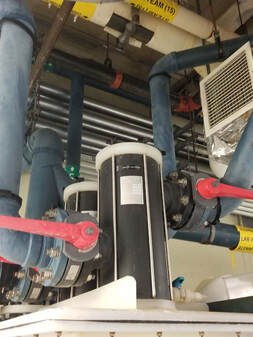Identification and Remediation of a Wastewater Discharge Violation
NIH Leased Building
Rockville, MD
Client
National Institute of Health
Duration
August 2017
Project Overview
In response to a notice of violation for exceeding mercury limits in wastewater, 3D Enviro undertook an urgent environmental assessment and remediation at an NIH-leased research facility. This case study highlights the complexities of tracing and mitigating mercury sources in laboratory environments.
Project Details
Challenge
Exceeding Wastewater Mercury Limits
In response to a notice of violation for exceeding mercury limits in wastewater, 3D Enviro undertook an urgent environmental assessment and remediation at an NIH-leased research facility. This case study highlights the complexities of tracing and mitigating mercury sources in laboratory environments.
Approach
Comprehensive Mercury Source Identification
3D Enviro’s response included detailed investigations to pinpoint the mercury sources:
Testing and Analysis: Employed the Ohio Lumex Mercury Analyzer to assess mercury levels in various sinks and drains within the facility.
Targeted Sites: Focus was placed on laboratory sinks, janitor sinks, and other potential discharge points like floor drains and fume hood cup sinks.
Findings and Immediate Actions
Elevated Mercury Levels: Six laboratory sinks and one janitor sink showed significantly higher mercury levels compared to the ambient background.
Further Investigation: Continued testing of downstream drainpipes from the affected sinks revealed persistent high mercury levels.
Remediation Efforts
Sink and Drainpipe Treatment: Removed p-traps of affected sinks and applied a mercury vapor suppressant followed by hydro-jetting in the drainpipes.
Wastewater Management: Isolated the building’s wastewater flow into a neutralization tank to prevent further violations during the cleanup process.
Hazardous Waste Disposal: Safely disposed of the neutralization tank’s contents as hazardous waste.
Project Results
Results
Effective Mercury Reduction
Successful Clearance Levels: All but one sink drainpipe tested below the post-decontamination clearance level of 1,000 ng/m3.
Specific Case Management: One problematic sink in a second-floor lab was further investigated, leading to the discovery and remediation of a highly contaminated section of the drainpipe.
Conclusion
Ensuring Compliance and Safety
This project addressed the immediate compliance issues and underscored the importance of rigorous environmental safety practices in research facilities. 3D Enviro’s effective management and technical approach resulted in a quick resolution of the violation, demonstrating our commitment to environmental stewardship and public health.
Continuing Impact
The successful completion of the contract has reinforced 3D Enviro’s reputation as a leader in environmental safety and hazardous material management. Our ongoing relationship with NIH underscores our commitment to supporting vital research through expert environmental services.
The project not only rectified the immediate contamination issues but also set a precedent for handling similar environmental hazards in industrial settings. 3D Enviro’s expertise in mercury assessment and remediation was crucial in returning the facility to a safe operational state.
Interested in ensuring your facility meets environmental safety standards? Contact 3D Enviro for comprehensive hazardous material assessments and remediation services. Our team is equipped to handle complex environmental challenges, ensuring your operations are safe, compliant, and efficient.
Ready to Enhance Your Project’s Success?
If you’re facing environmental challenges or just want to ensure your project proceeds without interruptions, contact 3D Enviro today. Our team is ready to provide expert consultation and services tailored to your unique needs. Get in touch with us to see how we can help keep your project on track, safely and efficiently.
Contact Us
Lindsay Neese
Director of Business Development
434-771-0030
LindsayN@3DEnviro.us
Office Address:
9000 Rockville Pike building 9,
Bethesda, MD 20892
Mailing Address:
4774 Burnley Station Road
Barboursville, VA 22923






